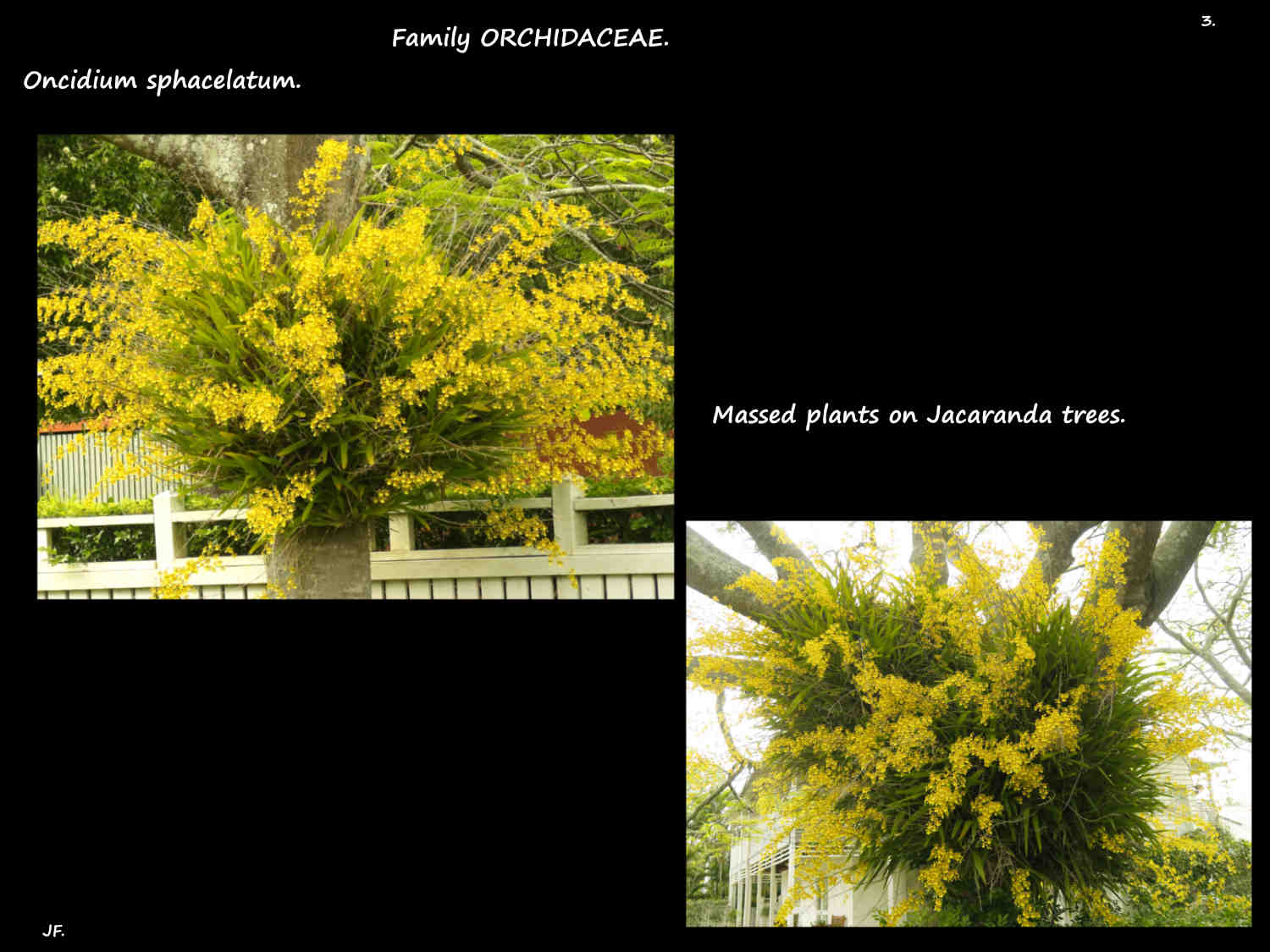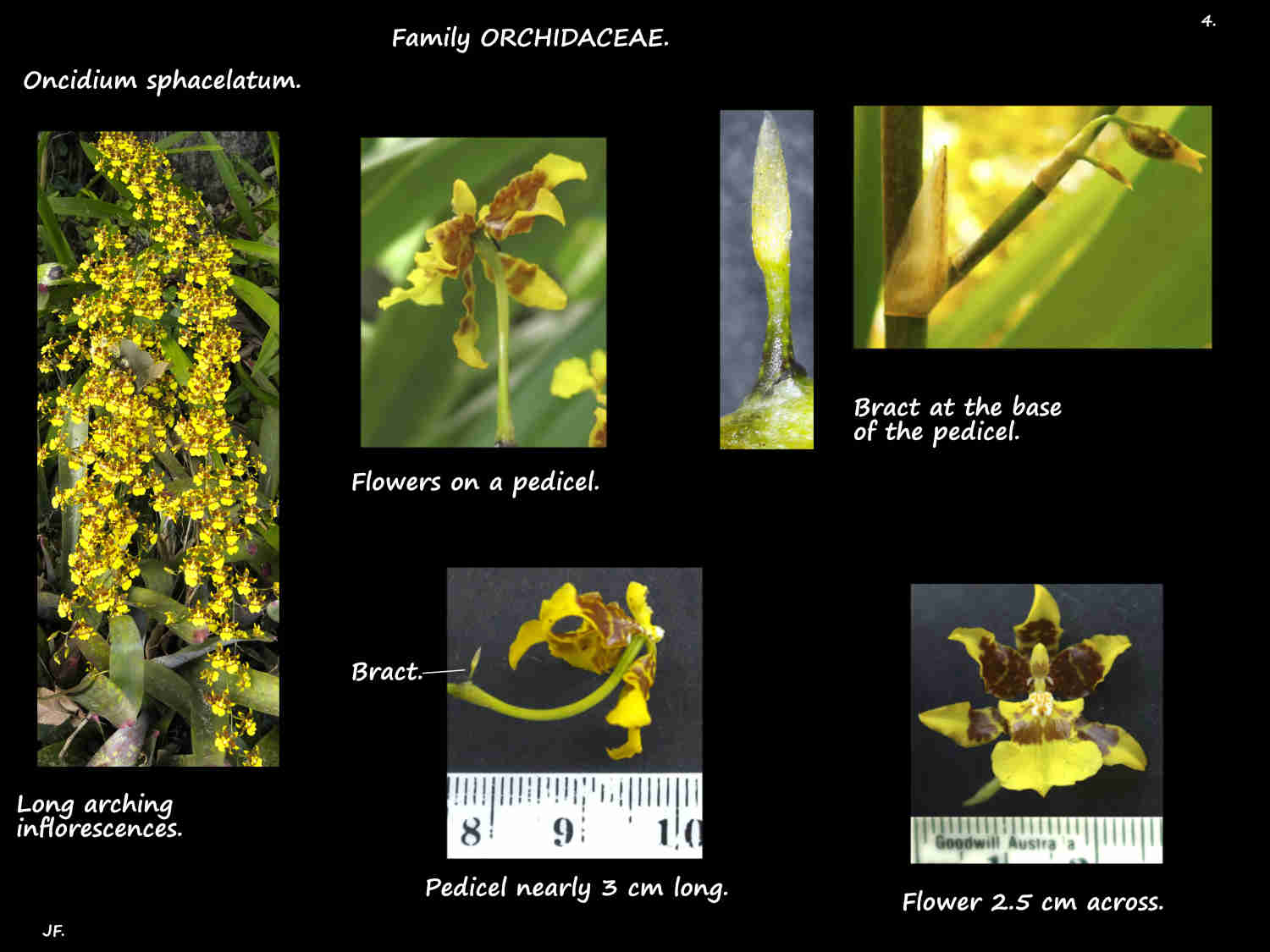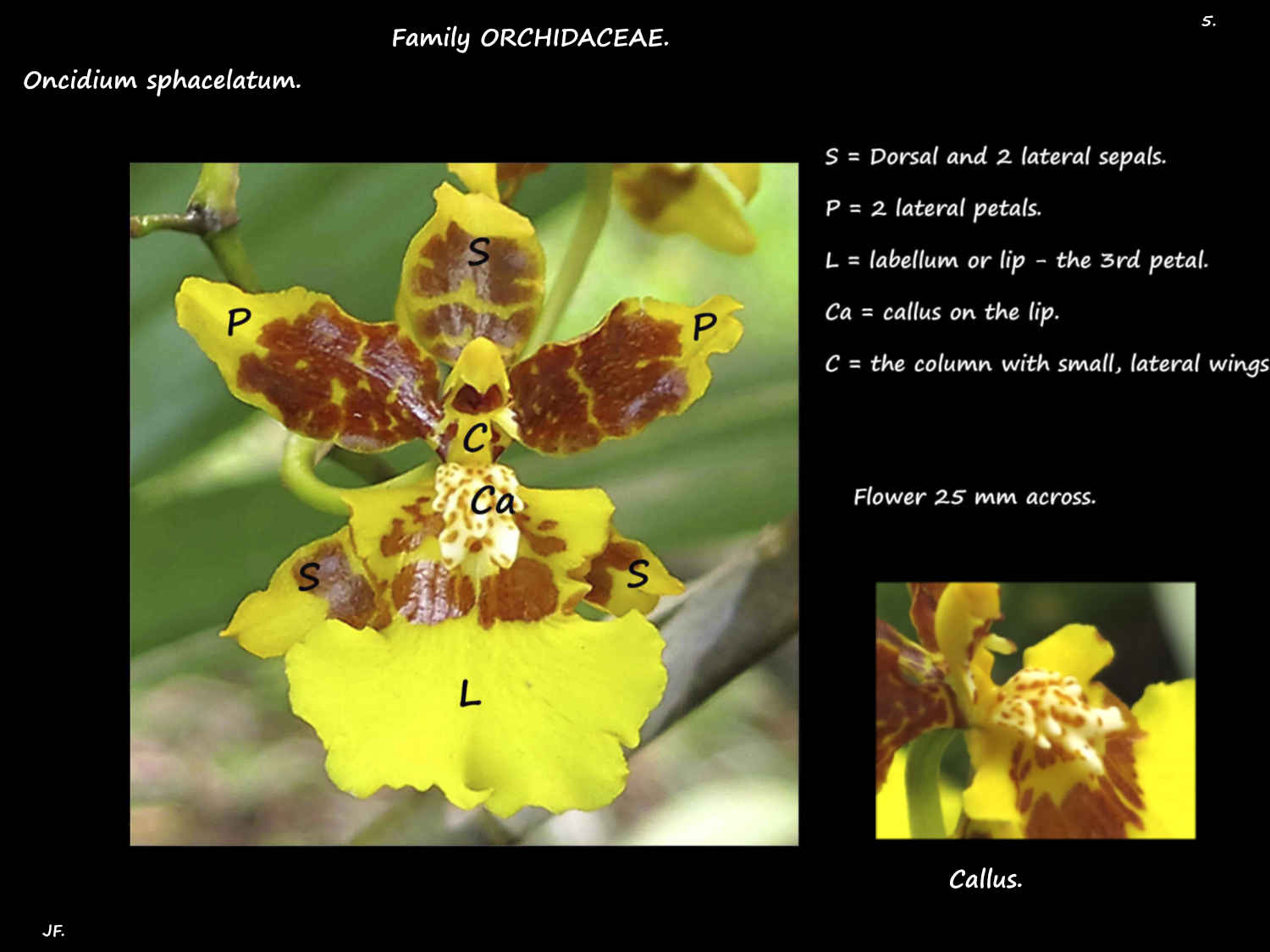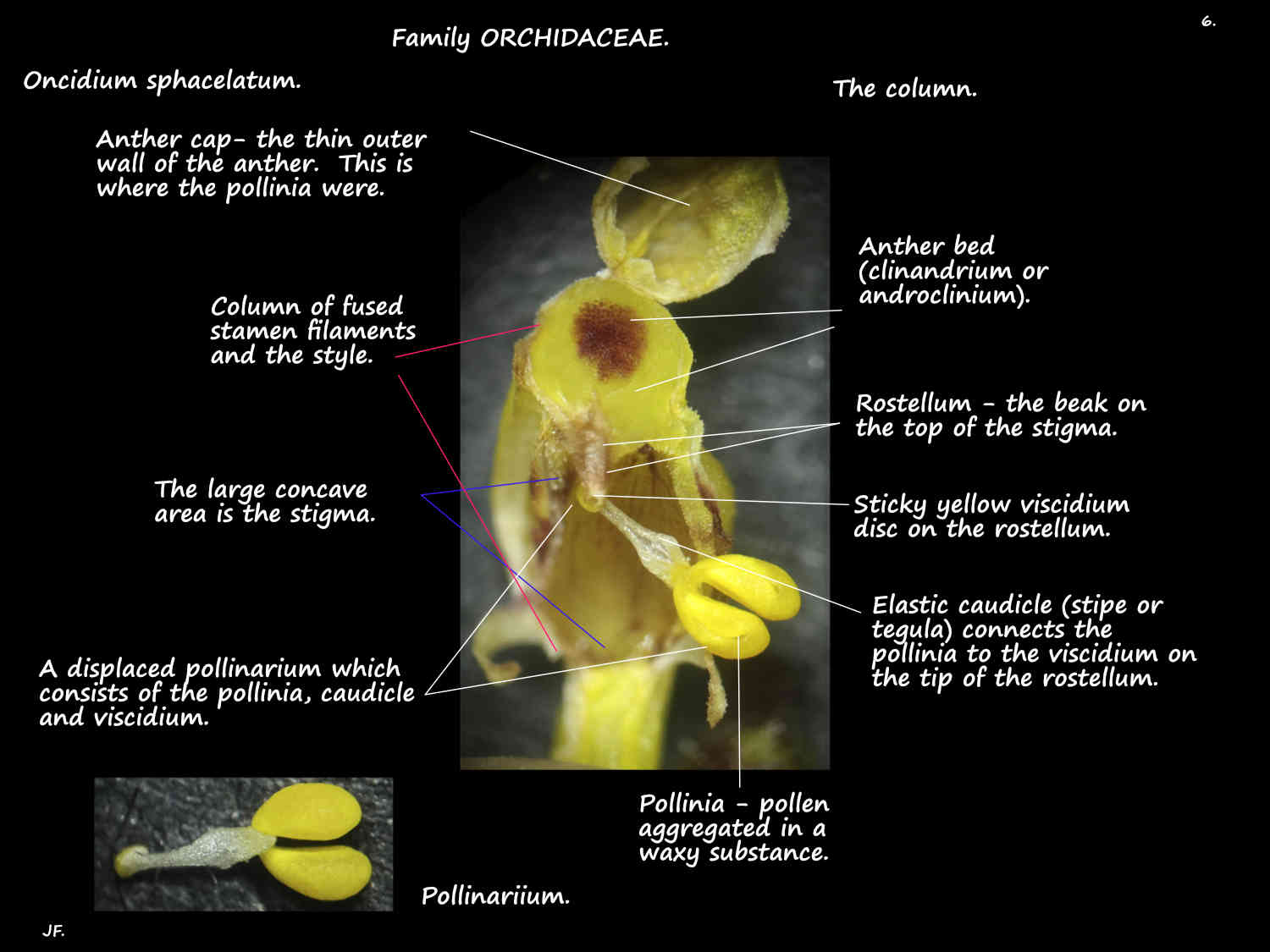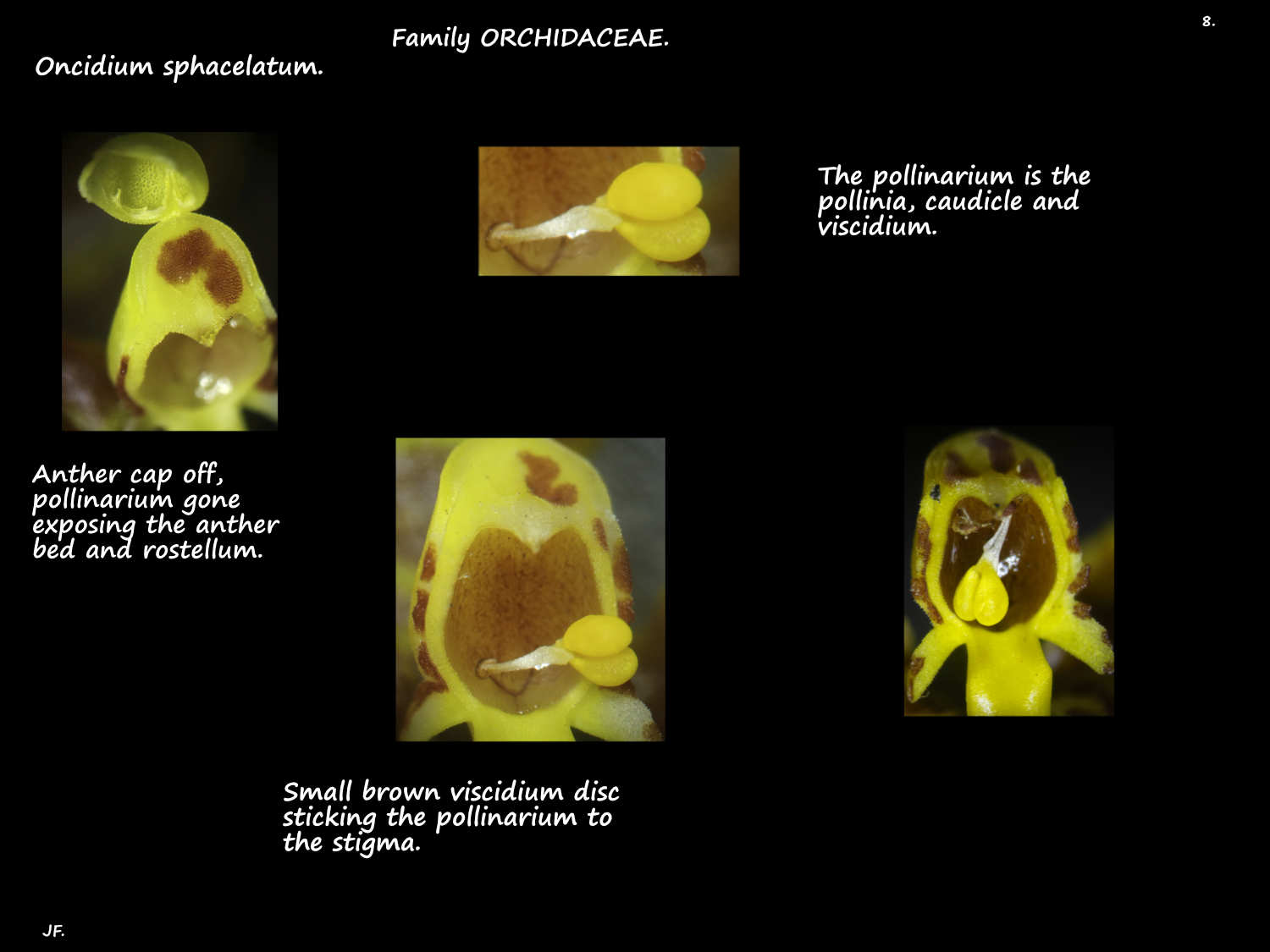Oncidium sphacelatum.
Native from Mexico into South America it is one of the largest species of Oncidiums.
Mainly epiphytes they can be 1 metre wide and nearly as high.
They have laterally compressed pseudobulbs (stems) up to around 12 cm long.
Each pseudobulb has 2 (3) leaves and 1 inflorescence stem.
The linear leaves can be over 30 cm long and up to 7 cm wide.
The erect then arching inflorescence stem, 1 to 1.5 m long is a panicle.
The short side branches along the stem are around 15 cm long.
The ultimate units are racemes with flowers, on pedicels opening from the bottom first.
Due to a twist in the pedicel the flowers are resupinate (upside-down).
Flower parts are basically in 3’s with some parts being fused.
They are around 2.5 to 3 cm across with the sepals and petals widely spread.
The 1 dorsal (upper) and 2 lateral petal-like sepals are around 4 mm wide and 15 mm long.
The 2 upper elliptical petals are around 12 mm long and 5 mm wide.
The lower petal or labellum is around 15 mm long.
It has a narrow base, a middle section with 2 short side lobes and a large wide terminal lobe.
At the base of the lip is a white ridged callus.
All perianth segments have a wavy edge.
They are all a bright yellow with reddish-brown bands and blotches.
The column is formed by the fusion of the stamen filaments and the style.
It has a pair of small wings.
At the top is the modified anther and below this is a large depressed stigma derived from one of the stigma lobes.
The other 2 stigma lobes are fused to form the rostellum which is a small beak on the front of the upper edge of the stigma.
Above the stigma is the flat anther bed covered by the anther cap which is the outer wall of an anther.
One or 2 pairs of pollinia lie on the bed.
Pollinia are the pollen grains in a hard waxy substance.
An elastic stalk or caudicle connects the pollinia to the viscidium on the tip of the rostellum.
The viscidium is a sticky disc.
The pollinia, caudicle and viscidium form the pollinarium which is removed as a unit by a pollinating insect.
J.F.


